





A stroll along the shore of any Pacific Island will surround you with a multitude of plants that, to the uninformed eye merely look and smell lovely and tropical. What you might not know, is that the majority of these plants have a much more important purpose in their lives. Please let me explain
In 2001 the first Herbal Plant Workshop was held in the Marshall Islands. This may seem like a rather innocuous statement. The world certainly didn’t change; there was no press coverage; CNN didn’t give the Workshop a logo and cover it from every possible angle. But for the women healers of the Pacific Islands, and for the people they care for, it was a momentous day.
Two Hawaiian traditional healers attended this convention to explain how much of their own traditional medicinal knowledge had been lost due to various factors such as the secrecy of the treatments and reluctance to share the information unless the recipient is deemed worthy. The fast paced modern world also led to the loss of knowledge, with migration and relocation of many indigenous people. These remarkable healers were hoping to encourage other Pacific Islanders to record their medicinal wisdom so that their people would not suffer the same fate as the Hawaiians, Australian Aborigines, American Indians and New Zealand Maoris. These societies are now realizing that they may have waited too long, and that their healing knowledge may have become a dying culture.
The convention was a huge success, and thanks to the contributions of traditional healers throughout Micronesia a compendium of knowledge and medicinal wisdom is being collected and recorded for the benefit of future generations. What has become apparent throughout this process is the innate understanding of the human body and the botanical world that these ancient healing arts demonstrate. Without benefit of x-rays, cat-scans, microscopes and the myriad of other scientific paraphernalia so common in the modern world, these healers diagnosed and treated conditions ranging from earaches and chicken pox to asthma, diabetes and even cancer. Quite understandably, the processes and recipes for treatments are much too complex to be covered in an article such as this. However, I would like to show you a few of the more common medicinal plants.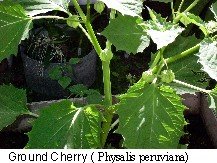
Bananas are one of the most common medicinal plants, and are used for everything from toothache to testicular hernia. The small emerging shoots are boiled and drunk to alleviate pains and body aches. The leaves are pounded and mixed with coconut oil into a poultice for the reduction of swelling. Larger leaves and the trunk are crushed into bath water for a healing soak for more serious injuries. And the roots are mixed with ash to ease a toothache.
Ground Cherry (Physalis peruviana) is mixed with Scented Fern (Phymatodes scandens) and boiled to produce a drink for the treatment of diabetes. The ferns are also a fever reducer.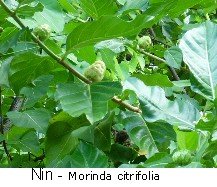
Basil (Ocimum basilicum) is combined with lime leaves in a steaming mist to be inhaled for the relief and treatment of asthma.
Papaya leaves, depending on their age and the process or recipe concocted are used in the treatment of high blood pressure, kidney infection, stomachaches and intestinal problems. The fruit is a cure for fungus and ringworm.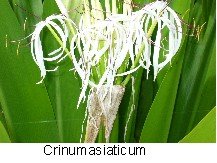
Crinim asiaticum is important for midwives. It is helpful in difficult births, and for the prevention of jaundice in newborns. It is also an analgesic, antiseptic and anti-inflammatory.
Tradescantia is helpful in the treatment of coughs that are not a symptom of a much more serious condition.
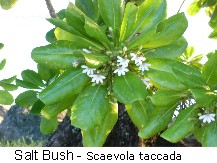 Saltbush (Scaevola taccada) is another staple in the midwife’s pharmacopoeia. As a tonic it is used for everything from easing childbirth to post-partum recovery and uterine health. As a bath for the newborn it is a gentle astringent to promote a healthy and robust child and to prevent rashes. The fruit is also used in the treatments of pinkeye, depression and backache.
Saltbush (Scaevola taccada) is another staple in the midwife’s pharmacopoeia. As a tonic it is used for everything from easing childbirth to post-partum recovery and uterine health. As a bath for the newborn it is a gentle astringent to promote a healthy and robust child and to prevent rashes. The fruit is also used in the treatments of pinkeye, depression and backache.
The Kamani Tree or beach mahogany is known as the medicine tree amongst the Pacific Islanders. As an herbal bath it is used to 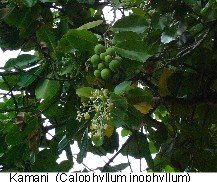 prevent or cure rashes, sores, cuts and bruises, and it eases the itch of chicken pox and measles. The oil from the nuts of the Kamani is highly valued as a skin lotion and conditioner, and many island women will shyly point to it when asked how they stay so young looking and beautiful.
prevent or cure rashes, sores, cuts and bruises, and it eases the itch of chicken pox and measles. The oil from the nuts of the Kamani is highly valued as a skin lotion and conditioner, and many island women will shyly point to it when asked how they stay so young looking and beautiful.
The juice of the beach pea (Vigna marina) is an antidote for fish poisoning. This is an important piece of information for a society whose major food group is from the sea.
The last plant I want to tell you about is the Nin (Morinda citrifolia). You may have heard it called Noni.  This is a remarkable plant that is used in more cures and for more conditions than any other in the islands. It is a blood coagulant, a fever reducer, an antiseptic, and an analgesic. It is used as a tonic for the treatment of food poisoning, nausea, diabetes and even cancer. Medical practitioners in the modern world are accepting the efficacy of this tonic as well, and the infomercials regarding its healing properties are filling the airwaves. Island healers just nod and smile, they have known about it for generations.
This is a remarkable plant that is used in more cures and for more conditions than any other in the islands. It is a blood coagulant, a fever reducer, an antiseptic, and an analgesic. It is used as a tonic for the treatment of food poisoning, nausea, diabetes and even cancer. Medical practitioners in the modern world are accepting the efficacy of this tonic as well, and the infomercials regarding its healing properties are filling the airwaves. Island healers just nod and smile, they have known about it for generations.
As doctors and scientists continue the research of botanical medicines to be found in the jungles and rain forests of our world, they are looking closer at the traditional medical practices of indigenous people. They are studying the efficacy of traditional, herbal and holistic medicine that the world largely ignored for the last two centuries. The collection and recording of healing wisdom and knowledge of the Pacific Islanders may someday prove to be of benefit, not just to their people, but to all future generations. The green is not just beautiful on these tiny islands, it is life itself.
Copyright © www.100flowers.win Botanic Garden All Rights Reserved